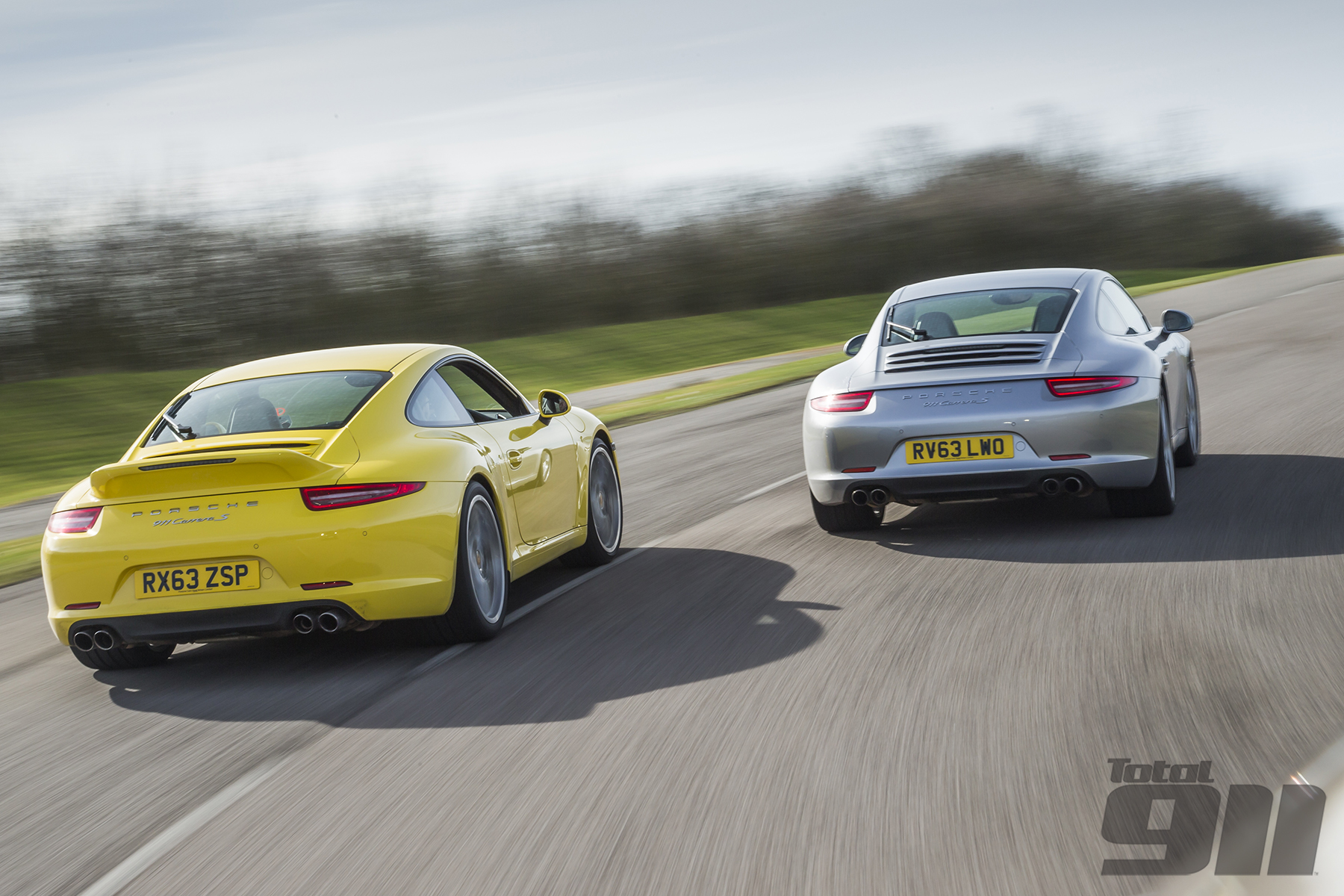What we’ve learnt from the Porsche 991: chassis
As we told you earlier this week, the 991-generation of 911 has now been in production for four years and, with the facelifted – and turbocharged – second generation due to arrive by the turn of the Frankfurt Motor Show in September, we’ve headed to Ireland’s beautiful Wild Atlantic Way in a C2 GTS to take stock of what we’ve garnered from the 991 so far.
In part one of our review we looked at the performance of the 991, and later in part three we’ll look at the all-important driver experience garnered from piloting the latest-generation 911. Under our scrutiny today though is its chassis, and it’s here where much debate persists over the 991’s integrity as a bona fide Porsche 911.
The big issue lies in engine placement. For the 991, its flat six engine is placed more on top of the rear axle, rather than past it. This calls into question just how ‘rear engined’ the 991 actually is, especially when compared to the full-bodied rear-engined nature of every single Porsche 911 that preceded it. As well as the engine’s incremental shift forwards, the ‘mid-engine’ feel is supposedly exacerbated by the 991’s extended wheelbase, which is 100mm longer than that of the previous generation 997.

So how does this transcend onto the road? Well, yes, the 991 does feel distinctly more mid-engined as such, meaning you can’t pivot the car from its rear in the same way you can a 997 (or 996, or 993, or 964, etc…). However, there’s no question the 991 benefits from an improved balance, particularly through corners. And, as Josh, Total 911’s Features Editor, discovered after a week with a 981 Cayman GTS, it’s not until you drive a true mid-engined Porsche that you realise the 991 still has textbook 911 handling characteristics woven into its DNA, where it’s still keen load up onto its rear haunches under acceleration and naturally understeer into a corner, forcing you to work hard to get that nose tucked in.
The adjustments in layout have brought out the best of both worlds for a serious 911 driver, then, and after a combined 20,000 miles of 991 experience between us, we at Total 911 are won over by these key changes.

Pleasingly, the handling remit is similar for both 2WD and 4WD 991 Carrera variants too. That’s the beauty of an all-wheel-drive 911: it still feels like a RWD sports car, though in fairness this was the same for the 997 too.
The clever torque distribution screen on the digital fourth pod is a useful tool for showing you how intelligent the 991’s system is in distributing power between the front and rear axle, giving you more of a rear bias exactly when you need it, and throwing more power forwards when required. There are times when the extra grip of a 4WD 991 is keenly felt, and in the wet the car feels unshakeable while not dumbing down the involvement that all special sports cars should possess.
Lastly, when it comes to speccing your 991, we strongly advise you to consider Porsche Dynamic Chassis Control. It may be pricey at £2,185 but it’s oh-so worth it. Utilising hydraulically actuated cylinders to effectively spread the load of the car through both front and rear anti-roll bars, it means the car is naturally better balanced through corners, allowing you to simply take them as if you were on rails.
Some say PDCC takes away too much feel, but we think Porsche have expertly retained just enough to ensure the driver can load up the car through a turn without being desensitised as to its permissible limits. It’s just one component of an exquisitely accomplished Porsche 991 chassis setup that’s a marked evolution over the 997 – while still unquestionably a 911.

Comments (0)